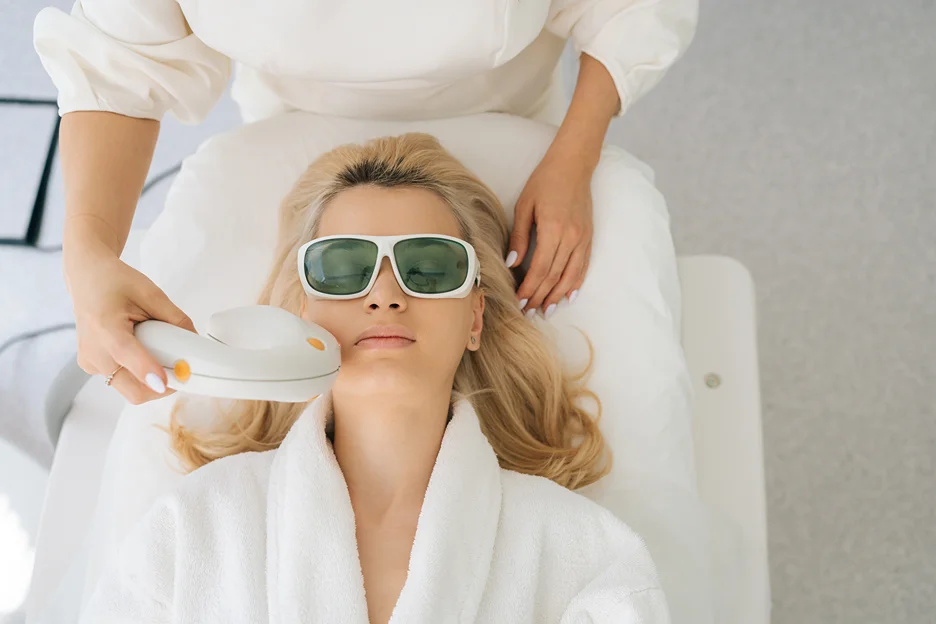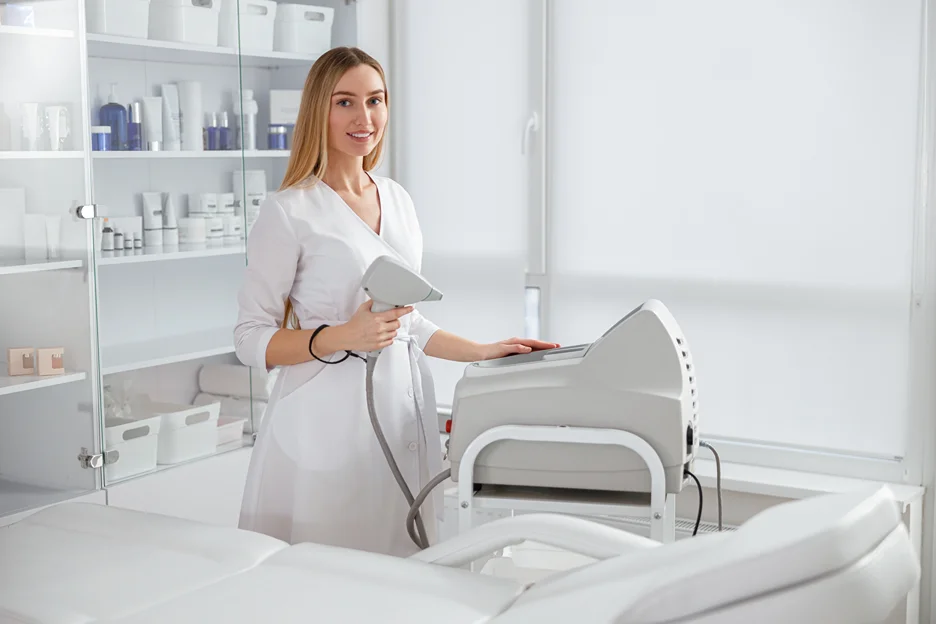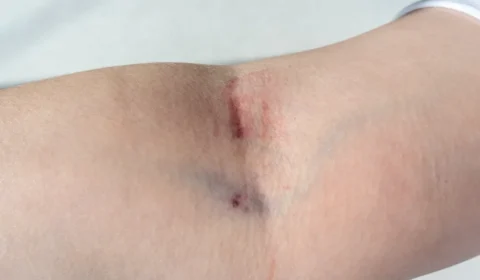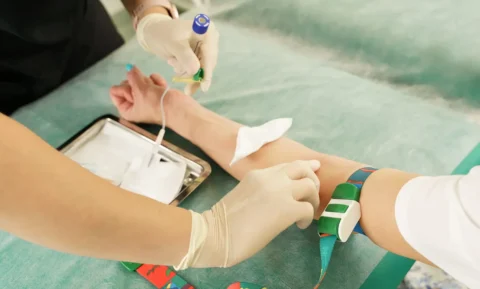In recent years, the demand for laser treatments and advanced skin care procedures has exploded in the aesthetics industry. As a result, many estheticians are looking to expand their skillset by learning how to safely and effectively operate lasers.
This article will provide an in-depth overview of laser laws and the scope of practice for estheticians across different states. We’ll get into which treatments estheticians can and cannot legally perform with lasers, key factors that influence state regulations, and tips for complying with requirements.
What Level of Physician Supervision is Required for Estheticians to Use Lasers?
One of the most crucial factors determining an esthetician’s ability to use lasers is the required level of physician supervision. Most states mandate that licensed medical professionals directly oversee or collaborate with estheticians performing laser procedures. Let’s take a look at common physician supervision protocols:
Requiring an On-Site Medical Director
Many states require that a licensed medical professional should be currently serving as the facility’s medical director. This person should be available to consult with and evaluate all patients prior to receiving laser treatments from an esthetician. They must be on-site when high-powered lasers are operated.
Written Protocols and Standing Orders
There are typically protocols, standing orders, and other instructions provided by the supervising physician outlining every aspect of treatment. This includes patient selection criteria, precise device settings, and step-by-step techniques that the esthetician must follow.
Direct vs. Indirect Supervision
Some states allow indirect supervision where the medical director is available by phone but not required to be on location. Other stricter regulations demand direct and immediate oversight when lasers are operated.
Training Requirements
Most medical directors must verify proper training and core competencies for every laser operator under their supervision. Both the physician and esthetician must complete mandated laser safety courses.
Clearly defined supervision and collaborative relationships with physicians enable estheticians to safely and legally expand the services they can provide using laser technology.
Which States Allow Estheticians to Perform Laser Treatments?

Now let’s dive into state-by-state regulations and requirements governing estheticians’ use of lasers. We’ll highlight some of the states where estheticians have more flexibility to perform laser hair removal and skin rejuvenation as well as those with tighter restrictions.
California
California has relatively relaxed regulations for estheticians operating lasers. With just an esthetics license and physician oversight, they can provide laser hair removal on the face and neck as well as laser skin rejuvenation treatments like IPL photofacials anywhere on the body. No separate or advanced certifications are required as long as supervision protocols are followed.
Arizona
Arizona permits broad services for estheticians with either an esthetics or a master esthetics license. With proper physician supervision, they can operate lasers for hair removal and cosmetic skin treatments on the entire body. Advanced training is not mandatory.
Tennessee
Tennessee law allows licensed estheticians to perform non-ablative laser procedures on the face and body with medical supervision. More invasive ablative laser resurfacing is restricted to the neck and below. Specific certifications or advanced degrees are not required.
New Jersey
New Jersey has strict limitations prohibiting estheticians from using lasers. Only advanced practice nurses or physician assistants can operate lasers. Estheticians are limited to basic skin services without energy-emitting devices.
New York
In New York, regulations prohibit estheticians from performing any service with a laser, light source, or other device that can alter human tissue. Only medical professionals can operate these tools. However, legislation is underway to potentially expand estheticians’ scope of practice.
Georgia
Georgia law restricts estheticians to external applications, facials, and superficial chemical peels. They cannot use lasers or medical devices. Certified physician assistants can operate lasers under a physician’s supervision.
Scope of practice can vary even within the same state depending on county or municipal rules. Be sure to verify local laser regulations with your state’s medical board. The information above illustrates just a sample of states where estheticians may have more or less latitude to perform laser-based treatments.
What Laser Techniques Can Estheticians Legally Perform?
While specific allowed services depend on state laws, here are some of the most common laser and light treatments that may fall within an esthetician’s scope of practice with proper supervision:
Hair Removal
Laser hair removal is one of the most popular and lucrative laser procedures offered at many esthetics practices. With oversight, estheticians can provide laser hair removal on areas like the legs, arms, underarms, bikini area, and face. More powerful medical lasers allow them to treat coarser hair on legs and backs as well.
Photofacial/IPL
Intense pulsed light therapy improves signs of sun damage, redness, and aging on the face and body by targeting melanin and hemoglobin. Estheticians can typically perform IPL photofacials with physician protocols in place.
Non-Ablative Laser Skin Resurfacing
Non-ablative fractional lasers treat wrinkles, acne scars, and uneven texture through collagen stimulation but without removing the epidermis. Estheticians often operate non-ablative laser skin resurfacing tools under medical supervision.
What Training Do Estheticians Need to Operate Lasers?
To legally and safely use lasers as an esthetician, specialized training and certifications are essential. Here are some common requirements:
- Core Laser Safety Course: Most states mandate that estheticians take an accredited laser safety certification course covering topics like laser physics, tissue interactions, eye safety, risk management, and more.
- Hands-on Laser Training: Supervised instruction during an instructional laser course teaches proper techniques for specific devices and treatments the esthetician will be performing.
- Continuing Education on Lasers: Annual CEU’s ensure that esthetician’s knowledge stays up-to-date on evolving laser practices, devices, protocols and safety standards.
- Advanced Esthetics Certification: Some states allow expanded laser services with an advanced esthetics certificate covering in-depth anatomy, physiology, laser physics, and hands-on training.
- Manufacturer Trainings: Specific instruction and certification on a laser device educate estheticians on proper usage protocols and techniques for optimal safety and results.
Proper training gives estheticians the confidence and core competencies needed to operate lasers under physician supervision. It ensures protection of both the client and practitioner.
What Liability Issues Should Estheticians Using Lasers Consider?
While laser therapies provide estheticians with profitable service offerings, they also come with professional risks if practiced improperly or illegally outside of scope. Here are a few major legal and liability considerations:
- Practicing Within Scope of Training: Estheticians must only use specific laser devices and perform laser procedures they are trained for and that align with state regulations.
- Medical Oversight and Protocol Compliance: Close physician collaboration and adherence to all supervised protocols minimize liability when using lasers. Failure to follow guidelines could leave estheticians vulnerable if adverse events occur.
- Informed Consent and Education: Educating clients on realistic outcomes, risks, and alternate treatment options improves outcomes and reduces liability. Proper patient selection per medical guidelines is also critical.
- Reporting Adverse Events: Any side effects or injuries caused by laser use should be reported to the supervising physician to review and submit to regulatory organizations if needed.
- Malpractice Insurance: Estheticians should verify adequate malpractice insurance coverage for laser services they perform, as typical liability policies may exclude more advanced treatments.
While laser therapy can be a lucrative opportunity, estheticians must prioritize patient safety, ethics, and legal compliance. Thorough training, physician supervision, and scope of practice limitations enable the safe expansion of an esthetician’s services. State boards of cosmetology ultimately work to protect consumers while advancing professional capabilities.
Conclusion

Thanks to their versatility, profitability, and outstanding results, laser-based skin treatments and hair removal rank among the most in-demand services in the aesthetics field today.
Opportunities exist for licensed estheticians to meet this consumer need legally and safely with specialized training and under medical supervision. But it’s important to note that regulations vary significantly between states and jurisdictions. By understanding the physician collaboration requirements, supervision protocols, training mandates, and liability issues surrounding laser use in their state, estheticians can make smart decisions about integrating laser procedures into their practice.
For those looking to begin offering laser treatments, contact us today at FACE Med Store to explore in-depth training courses and medical-grade laser technology.






